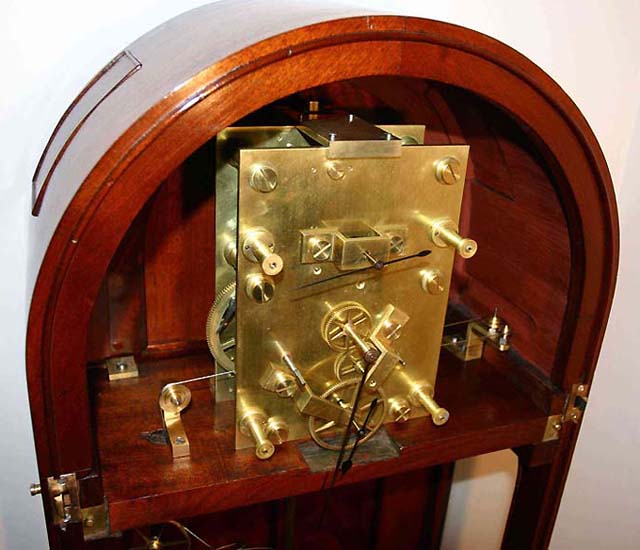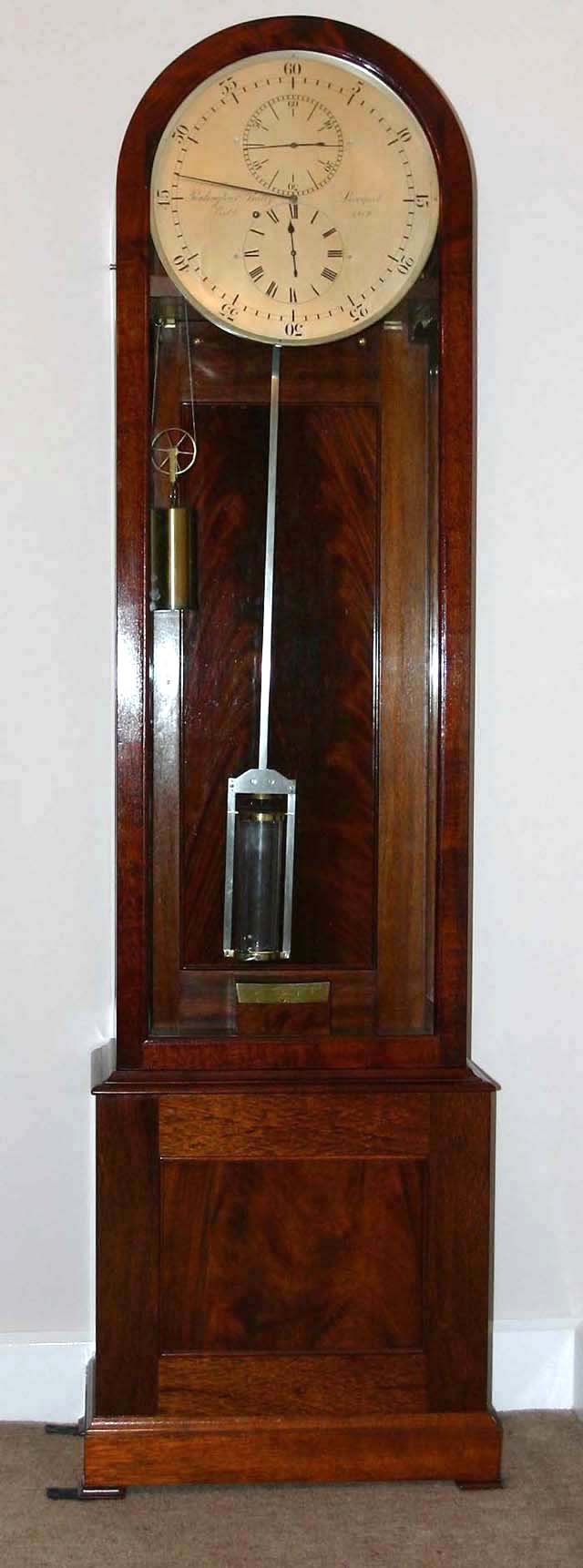
| WWT Shows | CLICK TO: Join and Support Internet Horology Club 185™ | IHC185™ Forums |

|
• Check Out Our... • • TWO Book Offer! • |
Welcome Aboard IHC185™  Internet Horology Club 185
Internet Horology Club 185  IHC185™ Discussion Site Main Page
IHC185™ Discussion Site Main Page  Horological Discussions, Questions and Answers
Horological Discussions, Questions and Answers  Clocks, Including 400-Day Discussions
Clocks, Including 400-Day Discussions  Unusual Cording on workshop regulator?
Unusual Cording on workshop regulator?
 Internet Horology Club 185
Internet Horology Club 185  IHC185™ Discussion Site Main Page
IHC185™ Discussion Site Main Page  Horological Discussions, Questions and Answers
Horological Discussions, Questions and Answers  Clocks, Including 400-Day Discussions
Clocks, Including 400-Day Discussions  Unusual Cording on workshop regulator?
Unusual Cording on workshop regulator?Go  | New Topic  | Find-Or-Search  | Notify  | Tools  | Reply to Post  |  |
I have spent the last year restoring an English longcase workshop regulator from about 1840.The cording arrangement is unusual and I wonder if any of you guys have seen anything similar? When I got this clock the cording came off the barrel thence it passed to a later slave barrel and then went down thru a 1/2" hole in the seat board rubbing the sides of the hole as it went. This was not original as no regulator of this quality would have such a poor arrangement. There was however a bracket and post to the right of the movement and this gave the clue to the final arrangement I implemented. The cord now leaves the barrel horizontally going to the right turns 180degrees and goes back under the barrel to the vertical pulley on the left then thru the hole to the weight. To get the correct cording geometry I had to introduce a second plate, post and wheel in front of the original. I may make new bracket and single pulley. All this to get the weight to move up and down vertically! Peter UK  | |||
|
Here's a scan of the final result. Peter  | ||||
|
Pictures are so big, the text can't be read without a LOT of sideways scrolling. Too much to bother with. bangster | ||||
|
| Vienna Regulators IHC Member 313 |
Looks rather crude. Usually they had a grooved drum on the seat board so the cord would follow off the winding drum. Pulley looks to big for set up. Good luck Doug Barr  | |||
|
Doug, Does your cord go thru a slot or a hole in the seat board? My clock had a grooved barrel set up just like yours but it did not work thru the hole. Peter | ||||
|
| Vienna Regulators IHC Member 313 |
Goes through a slot.D Barr | |||
|
| Vienna Regulators IHC Member 313 |
Also take a look on this site on 'to much time on my hands" for the restoration of a English Astro | |||
|
Doug, I am familiar with the principle of a drum as above or a roller as on your astro, but both of these need a slot to work. I have a 1/2" diameter hole, so the solution has to be something different. So what was the designer thinking of, what was he trying to do? It is generallly accepted that keeping the weight away from the pendulum is a good idea, maybe just taken to its conclusion here. The simplest modification I could have done was to reinstall the drum properly and cut a slot in the baseboard, but I wanted to see if I could reproduce something in keeping with the original scheme of things and I have done that, it winds well and the weight does not oscillate, albeit the scheme looks odd because of the apparent small scale of the pulleys and supports, but there again they are dictated by geometry and cannot be bigger. Peter | ||||
|
Doug On your movement above, is it signed? Peter | ||||
|
| Powered by Social Strata |
| Your request is being processed... |
|
Welcome Aboard IHC185™  Internet Horology Club 185
Internet Horology Club 185  IHC185™ Discussion Site Main Page
IHC185™ Discussion Site Main Page  Horological Discussions, Questions and Answers
Horological Discussions, Questions and Answers  Clocks, Including 400-Day Discussions
Clocks, Including 400-Day Discussions  Unusual Cording on workshop regulator?
Unusual Cording on workshop regulator?
 Internet Horology Club 185
Internet Horology Club 185  IHC185™ Discussion Site Main Page
IHC185™ Discussion Site Main Page  Horological Discussions, Questions and Answers
Horological Discussions, Questions and Answers  Clocks, Including 400-Day Discussions
Clocks, Including 400-Day Discussions  Unusual Cording on workshop regulator?
Unusual Cording on workshop regulator?©2002-2025 Internet Horology Club 185™ - Lindell V. Riddle President - All Rights Reserved Worldwide

